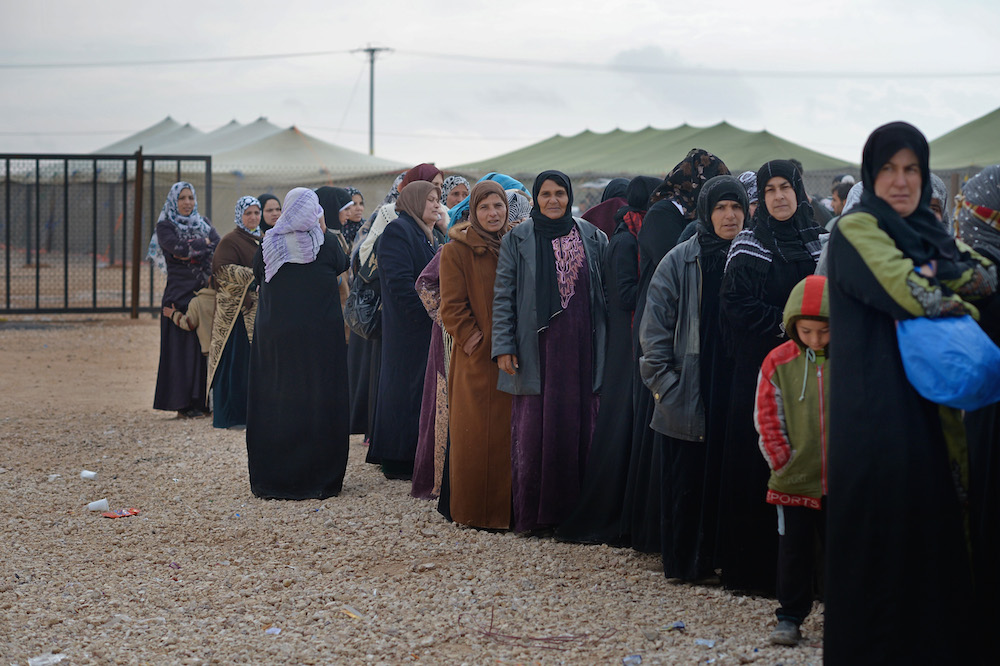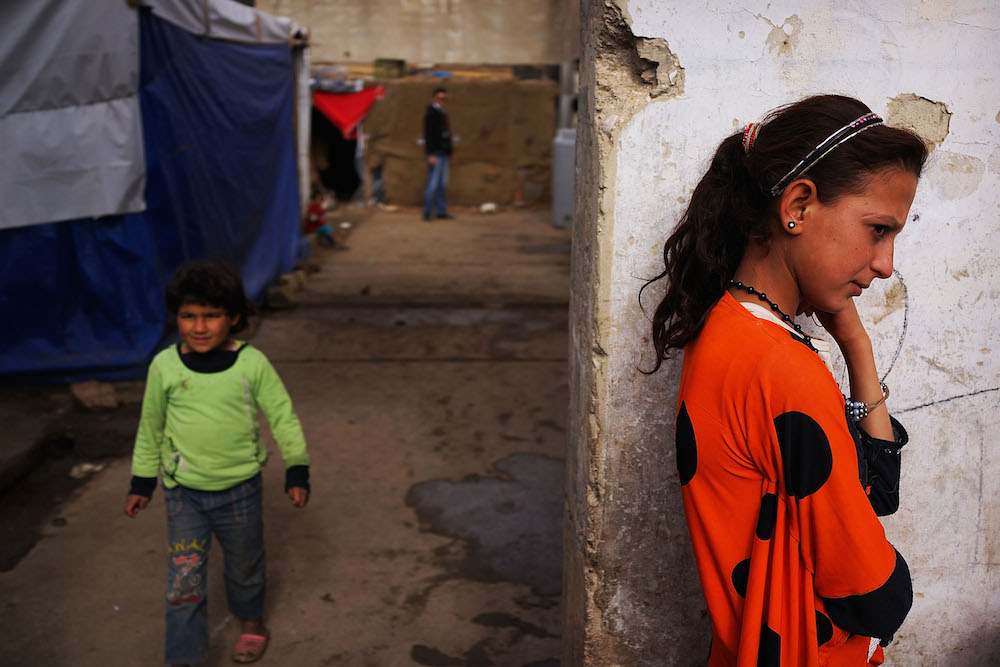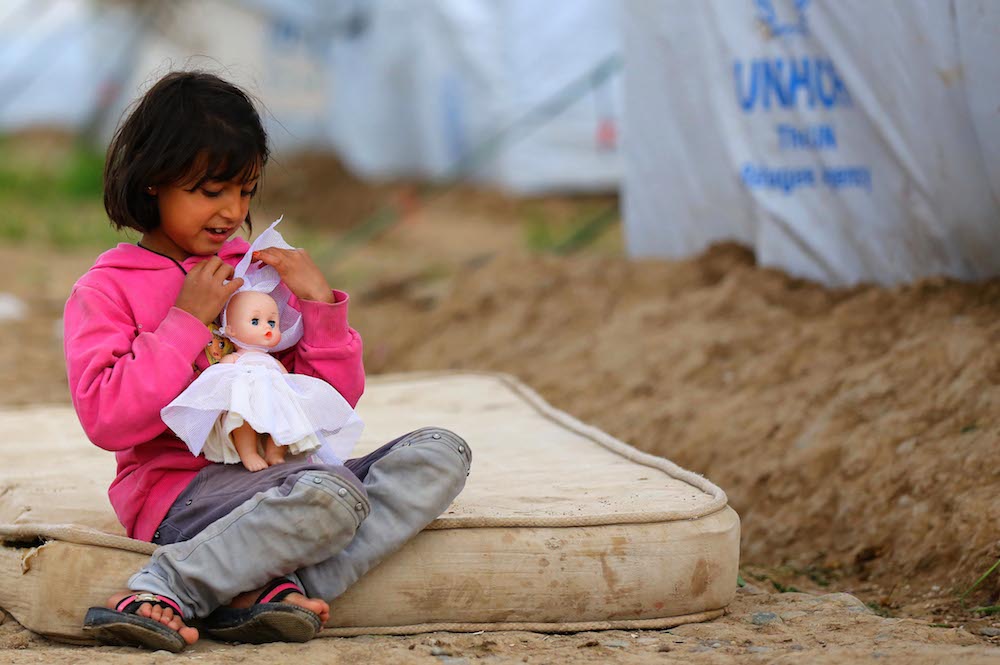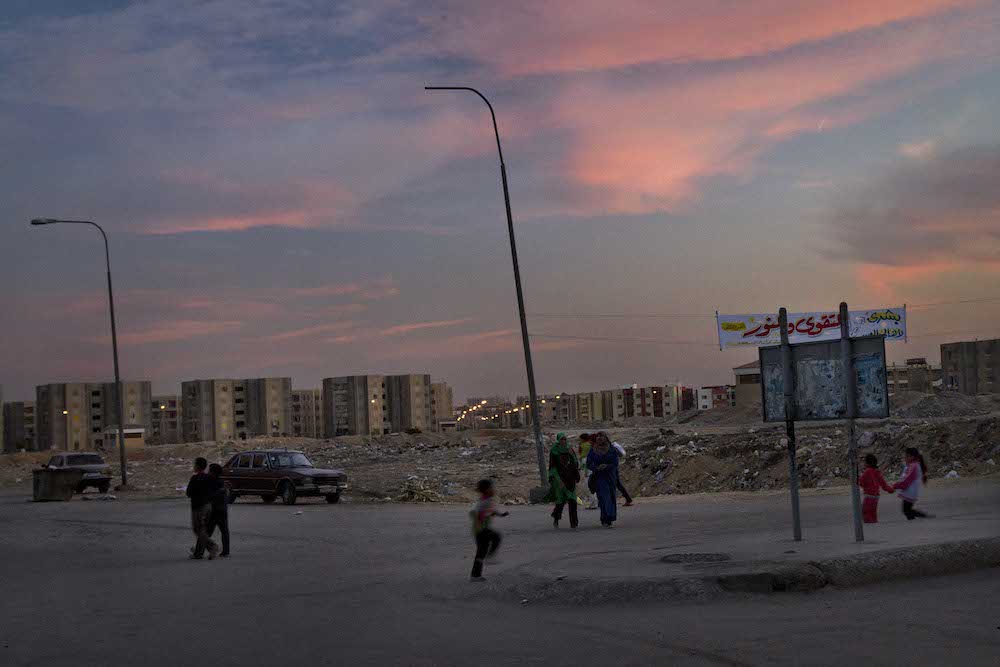



2013: 9
2012: 7
2013: 9
2012: 1
SYRIA'S LIFELINE
Lebanon
621,116 new refugees
317,849
new refugees
new refugees
new refugees
new refugees
new refugees
new refugees
new refugees
new refugees
new refugees
156,612
210,059
137,756
328,590
144,997
81,937
56,753
10,169
2013: 36
2012: 18
2013: 24
2012: 16
2013: 37
2012: 17
Turkey
426,820 new refugees
Jordan
123,741 new refugees
Iraq
77,945 new refugees
Egypt
70,757 new refugees
Escaping a civil war that has killed more than 150,000, over 2.8 million Syrian refugees are now hosted across 5 countries.
It is estimated that the number of Syrian refugees in need of assistance across the region may reach 4.1 million by the end of 2014.
It is estimated that the number of Syrian refugees in need of assistance across the region may reach 4.1 million by the end of 2014.
It is anticipated that an additional 1.7 million refugees will have been registered by the end of the year in five host countries: Lebanon, Turkey, Jordan, Iraq, and Egypt.
The influx of the refugees has been significantly increasing as the conflict enters its fourth year with the humanitarian situation only deteriorating further.
To handle one of the worst humanitarian crises in recent history, the UN and other aid agencies say they need more than $4.2bn. However, only a fraction of that amount has been received so far, making it difficult to meet the needs of those who seek safety and that of the host communities.
The influx of the refugees has been significantly increasing as the conflict enters its fourth year with the humanitarian situation only deteriorating further.
To handle one of the worst humanitarian crises in recent history, the UN and other aid agencies say they need more than $4.2bn. However, only a fraction of that amount has been received so far, making it difficult to meet the needs of those who seek safety and that of the host communities.
Lebanon is host to the largest refugee population - about 39 percent - scattered across over 1,500 locations.
Some 67 percent of the refugees rent basic apartments or homes, half of which are overcrowded with several families sharing limited space. Over 30 percent live in substandard and insecure conditions in makeshift shelters, tents, unfurnished buildings, garages, warehouses, and worksites.
Lebanon has the highest concentration of refugees, as a percentage of its population, in the world with refugees now making up about a quarter of the population.
Some 67 percent of the refugees rent basic apartments or homes, half of which are overcrowded with several families sharing limited space. Over 30 percent live in substandard and insecure conditions in makeshift shelters, tents, unfurnished buildings, garages, warehouses, and worksites.
Lebanon has the highest concentration of refugees, as a percentage of its population, in the world with refugees now making up about a quarter of the population.
Lebanon
1,095,577 refugees
Jordan
597,328 refugees
Pulses per minute = new refugees per hour
2014: 71
Refugees per hour
Refugees per hour
Refugees per hour
Refugees per hour
Refugees per hour
Refugees per hour
Refugees per hour
Refugees per hour
Refugees per hour
Refugees per hour
Refugees per hour
2014: 49
Refugees per hour
2014: 14
Refugees per hour
2014: 9
Refugees per hour
2014: 8
Refugees per hour
Jordan hosts about 21 percent of the region's refugee population.
An estimated 20 percent of the refugee population live in camps, the largest being the sprawling Zaatari camp in Mafraq governorate, which has become Jordan's fifth largest city.
About 80 percent of Syrian refugees are living in urban and rural areas, mostly in northern and central Jordan.
An estimated 20 percent of the refugee population live in camps, the largest being the sprawling Zaatari camp in Mafraq governorate, which has become Jordan's fifth largest city.
About 80 percent of Syrian refugees are living in urban and rural areas, mostly in northern and central Jordan.
Turkey
774,635 refugees
Turkey hosts about 27 percent of the total regional refugee population. The influx of refugees into the country far surpassed initial projections and there are expected to be 1 million refugees by the end of 2014.
About 36 percent of Syrian refugees in Turkey live in camps in 10 provinces on the southern and south-eastern border with Syria.
About 36 percent of Syrian refugees in Turkey live in camps in 10 provinces on the southern and south-eastern border with Syria.

Iraq
225,409 refugees
Iraq hosts about 8 percent of the regional refugee population. Nearly 40 percent of Syrian refugees in Iraq are hosted in camps, mostly in the northern Kurdish region of Dohuk, while 60 percent are living in local communities.
The majority of these are categorised as highly vulnerable, living in substandard accommodations. Iraq's own security challenges have seen ad hoc closure of borders, affecting access to safe haven for refugees travelling across the eastern border.
Nonetheless, the number continues to grow, with an average of 550 Syrian refugees arriving in Iraq each day.
The emergence of polio has been a particular health concern for the refugee population in Iraq.
The majority of these are categorised as highly vulnerable, living in substandard accommodations. Iraq's own security challenges have seen ad hoc closure of borders, affecting access to safe haven for refugees travelling across the eastern border.
Nonetheless, the number continues to grow, with an average of 550 Syrian refugees arriving in Iraq each day.
The emergence of polio has been a particular health concern for the refugee population in Iraq.

AP photo / Iraq
Jeff J Mitchell / Getty Images
Osman Orsal / Reuters
Spencer Platt / Getty Images
Data: UNHCR [ June 19, 2014 ]
Pau Rigol / EPA
Egypt
The vast majority of Syrian refugees in Egypt live in rented accommodations in the urban areas of Greater Cairo, Alexandria and Damietta.
Syrians were originally welcomed to Egypt without visa restrictions, but during the military takeover and mass demonstrations in the summer of 2013, that changed, and Syrians faced visa restrictions and harsh security clearance measures, also adding to tensions with the host communities.
A recent assessment found 49 percent of Syrian refugees in Egypt were considering leaving.
Syrians were originally welcomed to Egypt without visa restrictions, but during the military takeover and mass demonstrations in the summer of 2013, that changed, and Syrians faced visa restrictions and harsh security clearance measures, also adding to tensions with the host communities.
A recent assessment found 49 percent of Syrian refugees in Egypt were considering leaving.
137,679 refugees
65,527
new refugees